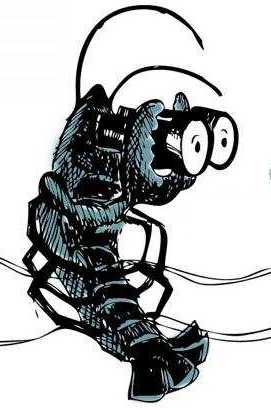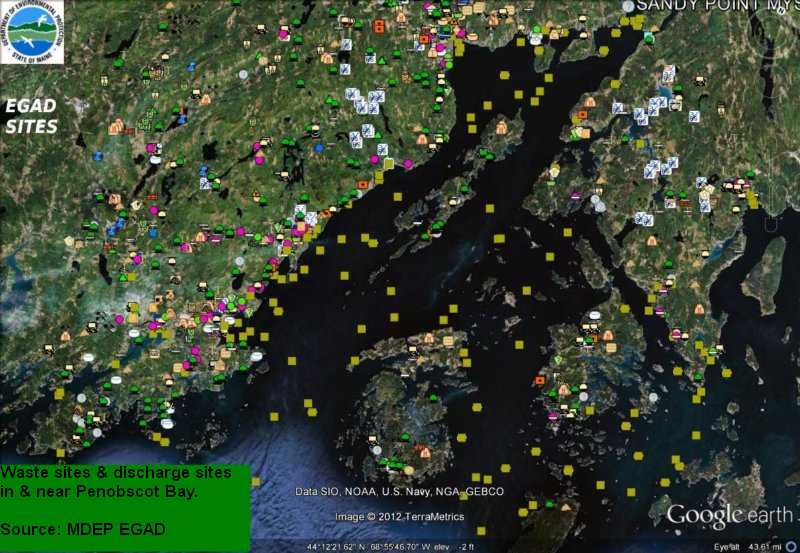
IT'S YOUR BAY.
Can you help take on the 19th & 20th centuries' legacy pollution & leaking waste dump sites around Penobscot Bay? Want to help fend off viewshed-marring, nature-degrading or over-hazardous "Dumb Growth" development around Penobscot Bay? Like to see vigorous bay fisheries again, from shallows with to deepest canyons? Like to shoot photos and videos from the air? From afloat? From under the surface? Then:
Contact us today!
Here are six ways YOU can help the Friends of Penobscot Bay save the bay. Right away!
1. Coastal and intertidal waste dumps and spills: finding them and cleaning them up, reversing them.
Action: Help us go through the government's list of 100s of spill sites around Penobscot Bay, and take on cleaning up or capping the worst! More info click here and here. It is important to seek out, surveyand remove or mitigate the hundreds of 'poison pockets' of contaminated mud and clay, and other industrial waste, that dot coastal Knox, Waldo and Hancock County, from coastal gully dumps to the intertidal flats around Penobscot Bay.
GoalUsing simple core-sampling techniques, and then submitting samples to FOPB's field spectrometers, we will establish a triage range of waste sites most needing remediation. State and federal investigative authority can then be called into action to examine those locations and take appropriate action. Click map for links to Penobscot Bay-area waste sites

Background. Since the start of the Carbon Age in the 19th century, the shores of Penobscot Bay and its tributary rivers and streams have been dumping places for the waste products of producing and consuming coal oil, gasoline, diesel, heating oil and other fuels and lubricants. By accident or design, an untold number of gallons of such wastes have been poured, leaked, spilled, leached or dumped directly into the bay and its shores, from Matinicus to Bucksport. From water surface biofilms to deep muds and clays.
2. Outfall Oversight. Dozens of Maine companies and municipalities have licensed outfalls emitting waste water into Penobscot Bay. Outfall users around Penobscot Bay include sewage treatment plants, seafood processors, chemical manufacturers and more. State and federal licenses limit what goes out those outfalls.
What you can do: Help us monitor the reports these communities and businesses submit to US EPA and Maine DEP, and make sure the required limits are being kept. Any red flags? More info click here.
3. Aerial Photo/Video Surveys. The shores and shallows of Penobcot Bay are always changing. Coastal & island forests, shorn in the 19th century, again gracefully drape the bay's islands and mountains skylines. Eelgrass meadows, salt marsh and mussel beds rise and fall. But McMansions and other eco-heedless coastal development is fragging that landscape and sending "stormwater" into the bay's sensitive shallows. Forest fragmentation and coastal wetlands loss is often invisible from the road. Want to document how the bay's living coastal landscape and seascape is doing? Take part in our bay overflights as aerial videographer / photographer. More info click here.
4.Underwater Video Surveys. Every season at every depth different fishes and shellfishes make their presence known in our bay. Help us get "mug shots" of the passing parade of marine wildlife in our bay, using our baited underwater video cameras to do so. More info click here.
5. Scenic Protection The natural rustic and historic landscapes and scenic vistas around Penobscot Bay are a key part of our area's attractiveness to more than a century of low impact, high spending tourism. Many of these landscapes are at risk as as commercial, industrial and residential developers press their plans. While Maine agencies have the duty under several state laws to protect and maintain Penobscot Bay's scenic assets, political pressure has kept dozens of outstanding vistas around the bay from recognition on the "official" list of significant scenic Maine landscapes. But through a simple citizen-based process, we can get those vistas the iofficial recognition they deserve and need. More info click here.
6. Invasive Species Watch. Will new colonizing organisms change our bay fisheries. Penobscot Bay's fisheries and its entire ecosystem has been significantly disrupted several times over the last two centuries by successful invasions of nonindigenous species. The common periwinkle and Baltic green crab were introduced to Maine in the late19th century. These two together wiped out much of Maine's coastal saltmarshes and softshell clams, respectively.
Objective. Determine presence of several newer invasive species in Penobscot Bay: the invasive seasquirt Didemnum Vexillum, Asian shorecrab Hemigrapsus sanguineous and invasive red seaweed Heterosiphonia japonica.bryozoan, the fouling bryozoan Membranipora membranacea, and the which may cover much or all of kelp blades (Laminaria sp.).
Methods. Consult fishermen, sailors, divers, scientists and agencies about their knowledge on newer invasives in bay. Followup with drop camera and SCUBA surveys of samples of each variety of Penobscot Bay seafloor areas. Share results with researchers, fishermen and regulators to determine if the outbreak will shift the bay ecology. Figure out how to react best to that shift.
Knowing what new invasions are presently underway can help fishermen retool their fisheriesonce more if and when necessary to exploit the changed ecological balance. Fishermen, sailors, divers, beachcombers and scientists, all have pieces of the invasion puzzle. Help us bring it all together so that we can keep ahead of the invaders. More info click here.